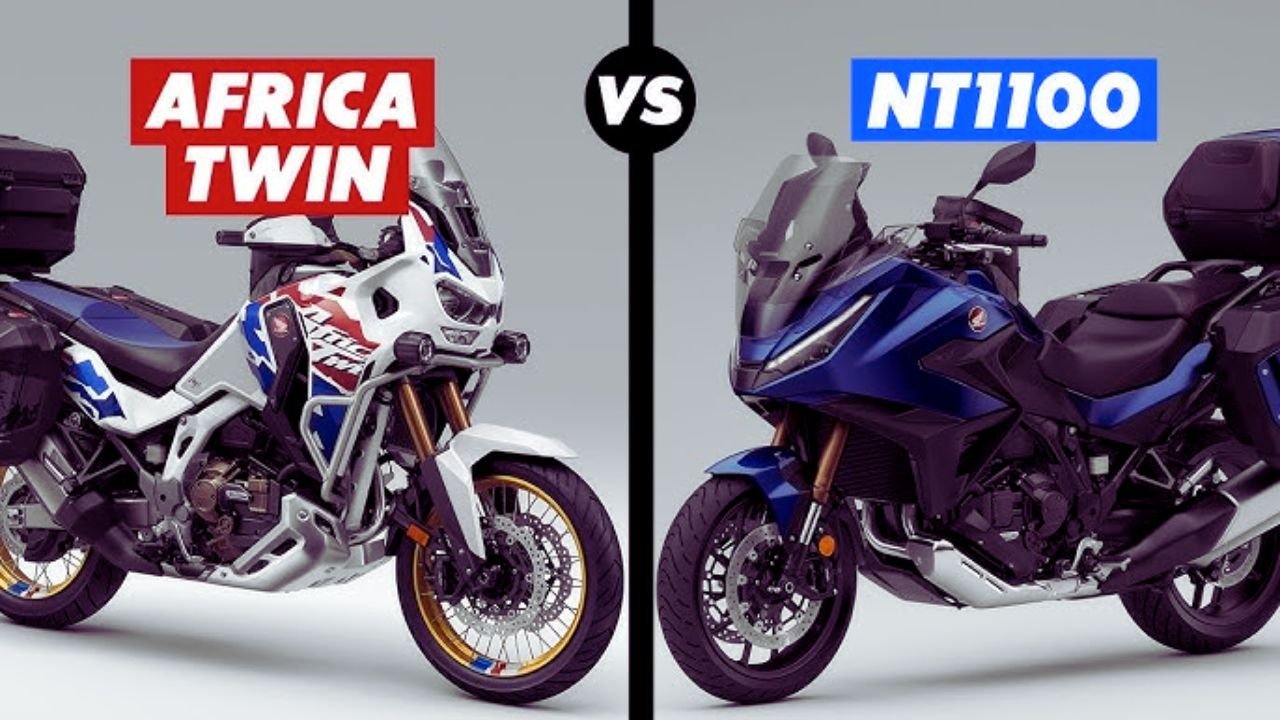For touring enthusiasts, the Honda CRF1100L Africa Twin and NT1100 are two compelling options from Honda’s lineup. Both share a 1,084cc parallel-twin engine, but the Africa Twin is an adventure bike with off-road chops, while the NT1100 is a dedicated road tourer. Here’s a simple comparison to find the better tourer, focusing on comfort, features, performance, versatility, and price.
Comfort and Ergonomics
Touring demands all-day comfort. The Africa Twin’s upright adventure stance offers great visibility and a relaxed posture, ideal for long rides. Its adjustable seat (850-870mm) is tall, which may challenge shorter riders, and the stock seat can feel firm after hours. The suspension (230mm front, 220mm rear) soaks up rough roads, but the windshield provides only decent wind protection. Pillion comfort is good, with a plush rear seat, but not luxurious.
The NT1100, built for road touring, excels in comfort. Its lower 820mm seat is more accessible, and the slightly forward-leaning position balances sport and relaxation. The adjustable windshield (164mm range) and wind deflectors block weather well, reducing fatigue. The plush seat (with an optional comfort upgrade) and roomy pillion accommodations make it a favorite for two-up riding. A standard center stand adds convenience.
Winner: NT1100, for its lower seat, better wind protection, and plusher seating.
Touring Features
Touring bikes need practical gear. The Africa Twin has a 6.5” TFT screen with Apple CarPlay/Android Auto, cruise control, heated grips (on some trims), and a 20L tank (250-mile range). Its electronics include lean-sensitive traction control, cornering ABS, and modes like Tour and Off-Road. The Dual Clutch Transmission (DCT) is smooth, but panniers are optional, adding cost.
The NT1100 comes ready for the road with standard 65L panniers, heated grips, cruise control, USB/12V sockets, and the same TFT screen. Its 20L tank matches the Africa Twin’s range. It has simpler electronics (three modes, no IMU unless 2025 model), but the 2025 version adds cornering ABS and optional electronic suspension in some markets. The DCT is equally polished.
Winner: NT1100, thanks to standard panniers and touring-focused features.
Performance and Handling
Both bikes deliver 102 HP, but the NT1100’s engine is tuned for smoother mid-range power, ideal for loaded road cruising. Its 17-inch wheels and shorter wheelbase (1535mm vs. 1574mm) make it nimble on pavement, though the 150mm suspension can feel stiff on bumps. At 238kg, it handles well with luggage.
The Africa Twin’s linear power suits mixed terrain, and its adjustable suspension shines on rough roads or gravel. The 21-inch front wheel prioritizes stability over agility, making it less sharp in tight corners but great for long, varied routes. It weighs 238kg (248kg DCT), feeling heavier at low speeds.
Winner: NT1100, for better road handling and smoother power delivery.
Versatility and Price
The Africa Twin is a versatile adventure tourer, tackling highways, backroads, and light off-road trails with its tall suspension and off-road modes. Starting at £13,049 ($17,500), it’s pricier, especially with optional luggage.
The NT1100 sticks to pavement, offering sharper road performance for £11,999 ($13,000-$14,000). Standard touring gear makes it a better value for road riders.
Verdict: The NT1100 is the better tourer for paved-road comfort, standard features, and affordability. Choose the Africa Twin if you want off-road versatility for adventurous tours. Pick based on your terrain and budget!


